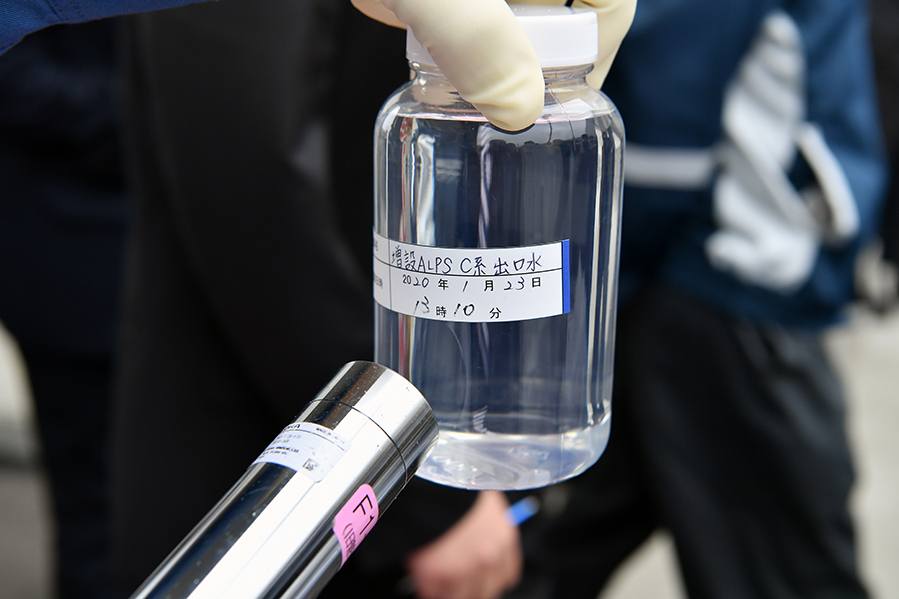As successive generations should not forget: the Manhattan Project first deployed nuclear fission to produce atomic bombs, and only then then redeployed it to produce energy. Ever since, our society has been more familiar with nuclear energy. But the primary byproduct of nuclear reactor activity is plutonium, which can always be used for producing nuclear weapons. The countries that produce the most nuclear energy for civil use as fuel—including, in order of the number of reactors, the United States, France, China, and Russia—are overwhelmingly armed with nuclear weapons as well. For more detailed analyses of the weapon/energy coupling, see Sabu Kohso, “Apocalyptic Capitalism” in Radiation and Revolution (Durham, NC: Duke University Press, 2020).
The idea involves self-refuting contradictions for both sides, and it is uncertain if it ever really worked between the United States and the Soviet Union. On the essential paradox of “deterrence,” see Jean-Pierre Dupuy, "The Nuclear Menace," in The Mark of the Sacred, trans. M.B. Debevoise (Stanford, CA: Stanford University Press, 2013), 175-194.
Marc Santora, Ivan Nechepurenko, and Matthew Mpoke Bigg, “Ukraine Nuclear Plant Pulled Off Line After Shelling Kindles Blaze,” New York Times, September 5, 2022, ➝.
Jem Bartholomew, “First Thing: Russians flee Chernobyl with radiation sickness, says Ukraine,” The Guardian, April 1, 2022, ➝.
Dennis Normile, “Japan plans to release Fukushima’s wastewater into the ocean,” Science, April 13, 2021, ➝.
Shinzo Abe, the former prime minister and leading Japanese nationalist who was assassinated this past summer, instigated the debate to reconsider nuclear armament.
From an interview of one of the pro-armament politicians, Shigeru Ishiba, October 21st, 2022, ➝.
See Kohso, “Apocalyptic Capitalism.”
Günther Anders, “On the Bomb and the Causes of Our Blindness in the Face of Apocalypse,” in Die Antiquiertheit des Menschen (Munich: Beck, 1980), 1: 233-324.
For clarification, my reading of apocalyptic blindness stresses the agency of the capitalist nation state, rather than humanity in general. For it was not “humanity in general” that created and dropped atomic bombs; it was the United States of America—or, more generally, one could say capitalist nation states in conflict for global hegemony as an extension of Western colonialism.
Günther Anders, “Theses for the Atomic Age,” in The Life and Work of Günther Anders: Émigré, Iconoclast, Philosopher, Man of Letters, eds. Günther Bischof, Jason Dawsey, and Bernhard Fetz (Innsbruck: StudioVerlag, 2014).
Anders, “These for the Atomic Age,” 189.
Anders, “Theses for the Atomic Age,” 191-192.
George Caffentzis, “Against Nuclear Exceptionalism with a Coda on the Commons and Nuclear Power” (presentation, “Crisis and Commons: Prefigurative Politics after Fukushima,” Tokyo University, December 2, 2012).
Jean-Pierre Dupuy, The Mark of the Sacred, trans. M.B. Debevoise (Stanford, CA: Stanford University Press, 2013), 193; René Girard, Violence and Sacred, trans. Patrick Gregory (London and New York: Continuum, 2005).
The name Koizumi Yakumo is in Japanese order: the family name first and the given name second.
Koizumi Yakumo, “Jishin to Kokuminsei (Earthquakes and National Character),” in Koizumi Yakumo Zenshu, vol. 17 (Tokyo: Daiichi Shobo, 1928).
Arata Isozaki, Japan-ness in Architecture, trans. Sabu Kohso (Cambridge: MIT Press, 2011), 138.
See ➝.
Takashi Tsumura, Transversal Discourses, Transversal Connections {Ogi-Oko Ron} (Tokyo: Koshi-sha, 2016), 256.
His reading is based upon Kojiki and Nihonshoki, semi-historical accounts, mixed with myths.
In the postwar period, a historian and archaeologist Namio Egami (1906-2002) initiated a debate on the origin of the imperial family; the point is that the Japanese islands were invaded by a horse-riding people from the continent who went on to establish the archaic Japanese state, Yamato Kingdom, around the late fourth century.
Tsumura, Transversal Discourses, 256.
